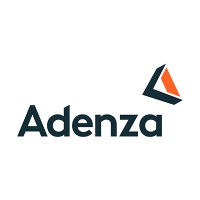Gil Guillaumey at Adenza takes questions from FTF News on the best ways for firms to cope with a perfect storm of three global market challenges.

Gil Guillaumey
(Trading and risk management teams at global securities firms are facing a perfect storm of rising inflation, the ripple effects of the pandemic, and the Russian invasion of Ukraine. Gil Guillaumey, head of strategy — capital markets at Adenza, recently answered questions from FTF News about these concerns and about the best ways forward amid challenging times,)
Q: Given the current, unique set of global market conditions, which of the new tensions is causing the most problems for trading and risk management for equities? Same question for bonds and derivatives?
A: Global capital markets are experiencing a perfect storm that is pulling its energy from a trio of powerful drivers: rapidly rising inflation, continuing palpable consequences of the pandemic, and the war raging in Ukraine.
From a trading perspective, this storm translates into market volatility spikes across all asset classes: equities, bonds, and derivatives. This treacherous environment requires financial institutions to monitor their P&L and risk sensitivities very closely – in real time – and perform intraday simulations of potential market developments impacts on portfolio values.
From a middle-office risk standpoint, this means more margin calls to generate and manage. During each day, firms must be able to anticipate what the end-of-day calls will look like. Crisis volatility also impacts the nature of collateral exchanged and a general flight to quality is occurring. Under these unique market conditions, organizations gain competitive advantage by having a central cash and security inventory – which they can allocate optimally.
Q: How are these new tensions impacting the compliance requirements of firms?
A: The invasion of Ukraine has triggered an international response – with sanctions on oil contracts and named institutions/individuals blacklisted from participation in the international financial markets.
Financial institutions have had little time to translate these new and changing rules into specific configurations in their compliance tools. Making these adjustments has been especially challenging for firms with trading systems siloed by asset class or geography.
Numerous customers spontaneously informed us that thanks to the consolidation of their compliance management on Adenza’s Calypso solution, they have been able to deploy all new rules on their global activity – within minutes. We are proud that our solution enables them to quickly prevent doing new business with sanctioned entities and also extract exhaustive, clear reports listing the contracts they need to wind down, so they can exit them at the best possible prices.
Q: What kind of strategies should firms develop for the ongoing, sudden swings in financial markets?
A: The war immediately produced shocks on gas, oil, and FX markets and will lead to other commodity shortages. These shocks are concretely impacting populations worldwide and will continue to affect the global economy for at least the next 12 months.
In addition, the rising inflation environment (that pre-existed this situation) and potential defaults of Russian counterparties are creating challenges for treasurers and traders. It will be crucial to for them to be able to quickly incorporate more risk metrics such as XVA and IM, and through stress-testing, determine the right prices of new transactions.
Therefore, Adenza recommends consolidating the functions responsible for managing their liquidity and investment books as much and as quickly as possible.
Q: The ongoing swings will cause more margin calls, and volatile collateral values. What steps can firms take to make certain that their IT infrastructure can cope with the market swings?
A: During to the COVID crisis, we experienced significant volatility spikes that translated into higher-than-usual volumes of margin calls. With the onset of the war, CCPs revealed even more collateral shortages. CCPs efficiently managed this procyclicality effect by adjusting their margin parameters, so thankfully, these shortages have been properly resolved by the clearing members.
Having a responsive infrastructure is key to weathering this crisis-driven storm. We believe that Adenza’s technology is playing a significant role in enabling this kind of positive outcome by, for example, making CCPs’ margin parameter adjustments available in its solutions immediately thus facilitating its clients’ ability to respond accurately and rapidly.
Clearly financial institutions must size their trading infrastructures to absorb such activity peaks. But they must also be able to replicate the expected margin calls they are likely to receive from all CCPs and exchanges to avoid being cornered by unexpected margin calls that would jeopardize their P&Ls.
Having the right technology solution is critical and its scalability is key. That is why Adenza’s solutions are natively deployed in cloud infrastructures and designed to scale up or down with volumes, enabling clients to adapt to market evolutions transparently and fluidly.
Q: How important is straight through processing (STP) in helping a firm manage the high volumes created by volatility?
A: Activity spikes during financial crises are the best acid test for any post-trade operation organization as the volume of transactions requiring manual processing can very quickly become unbearable.
When trade reporting and settlement must occur within a limited time window, failures to process can lead to financial penalties. Therefore, financial institutions must strive to optimize their post-trade activities.
Our solution stack transparently combines Calypso’s and AxiomSL’s leading solutions that respectively provide the highest STP rates in the market for post-trade operations and the most comprehensive trade and transaction reporting solution.
Thus, our clients have confidence that mandatory post-trade processes take place accurately, efficiently, and on time.
Q: Fund managers are feeling the pressure from volatility. How does integration among portfolio management systems, treasury, and liquidity management systems help, if at all? Also, does integration help with collateral ad securities finance systems?
A: Yes, integration helps immensely – it is mission critical and not advisable to wait for a major crisis to act. Firms should integrate portfolio management systems with the full inventory used by repo traders, security lenders, and collateral managers, making sure they are permanently updated with settlement information. The benefits accruing to fund managers who integrate their systems include, for example:
- Ability to make better funding decisions
- Improved regulatory ratios for treasurers
- P&L gains for security lenders
- Wider inventory accessible to collateral managers
In addition, and especially during times of extreme tension, firms need to institute full integration with compliance to ensure they can apply modified eligibility and concentration rules to all trading decisions that involve securities – in real-time.
Q: Sanctions related to the invasion of Ukraine are being announced and implemented a breakneck pace. This causes sudden rebalances in portfolios and requires compliance systems to be quickly updated. How would integration among these systems help with these challenges? And how configurable are these systems when new sanctions rapidly emerge?
A: In addition to the shock effects on systems discussed previously, we should also address other impacts of today’s ‘perfect storm’ on IT. Cyber-attacks are on the rise. On this front, it is crucial for all financial market participants to identify and battle-test their mission-critical environments, particularly when they are deployed in the cloud. For our part, Adenza prioritizes the development of highly secure cloud infrastructures – continuously obtaining industry-leading certifications and audits and having established a dedicated taskforce to protect our client platforms from abnormal activity and prevent unauthorized access.
 Q: Authorities across the world are making changes to fight high inflation rates. Forthcoming regulation and market reforms such as the transition away from LIBOR are complicating matters. What role can integration play in making these challenges more manageable?
Q: Authorities across the world are making changes to fight high inflation rates. Forthcoming regulation and market reforms such as the transition away from LIBOR are complicating matters. What role can integration play in making these challenges more manageable?
A: Although the LIBOR transition deadline was initially set to end at the end of 2021 in Europe and for several tenors in the US, we are still in a transition phase until the final cessation of synthetic rates. The transition has been slow as many institutions started too late and/or underestimated the number of systems they would have to update and the magnitude of those changes. We heard “this is just a curve change” commentary until people realized the full implications across the front-to-back trading chain and beyond.
So indeed, a consolidated front-to-back trading stack capturing the broadest spectrum of asset classes is of paramount importance. Furthermore, consolidation becomes a true source of cost reduction in a world where regulatory and marketplace reforms are never-ending. These savings are mechanically generated by reducing the number of solutions to update, but also occur organically via the reduced need for reconciliations. In a siloed system architecture, different vendors and/or internal systems are likely to deliver different interpretations or coverage of new RFR conventions, creating inconsistencies that incur time/resource costs to resolve and inject risks. Utilizing a single, integrated system like Adenza’s propagates changes such as the LIBOR transition smoothly, consistently, and efficiently.
Need a Reprint?